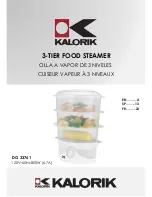
JANUARY 2014
page 10
www.fisherstoves.co.nz
Firewood should be cut and split in the early spring and stacked under cover, with
good ventilation, to be ready for burning when required.
Look for checks or cracks in the end grain as a sign of dry wood. The stacks of firewood should be in an
open area so that air can circulate through them. During the summer, as warm breezes flow through the
stacks, carrying away the evaporating water, the moisture content of the wood will fall to around 20 per cent.
At this moisture content the wood is ready for burning.
Although the energy content of dry wood per kilogram is almost the same regardless
of species, some burn differently because of differences in density e.g pine is less dense than woods like
gums, Manuka or Black Wattle. A denser wood will produce a longer-lasting coal bed, while a less dense
wood will bring a fire to an optimum burning temperature more quickly.
The size of the firewood pieces affects the rate of combustion. Larger pieces ignite and release their energy
more slowly than small pieces. Smaller pieces are better for short, hot fires and larger pieces are preferable
for extended firing cycles. In general, commercial firewood dealers supply firewood in thicker pieces than
modern wood-burning heaters can handle. It is often necessary to split some of the wood again before using
it. The thickest piece size for high-efficiency heaters should not exceed about 150 mm (6 in.) across the
largest dimension and a range of smaller pieces will be needed for effective stoking. Maximum log length
varies according to model.
BurNiNG COAL
When using coal, the only type you should use is sub-bituminous coal (check with your local supplier). Note:
removal of the safety tab on the ash door pan will cause severe damage due to overheating from excessive
air supply.
Removal of tab will void warranty.
Please also refer to ‘Exclusions’ in the Warranty Page 14.

































